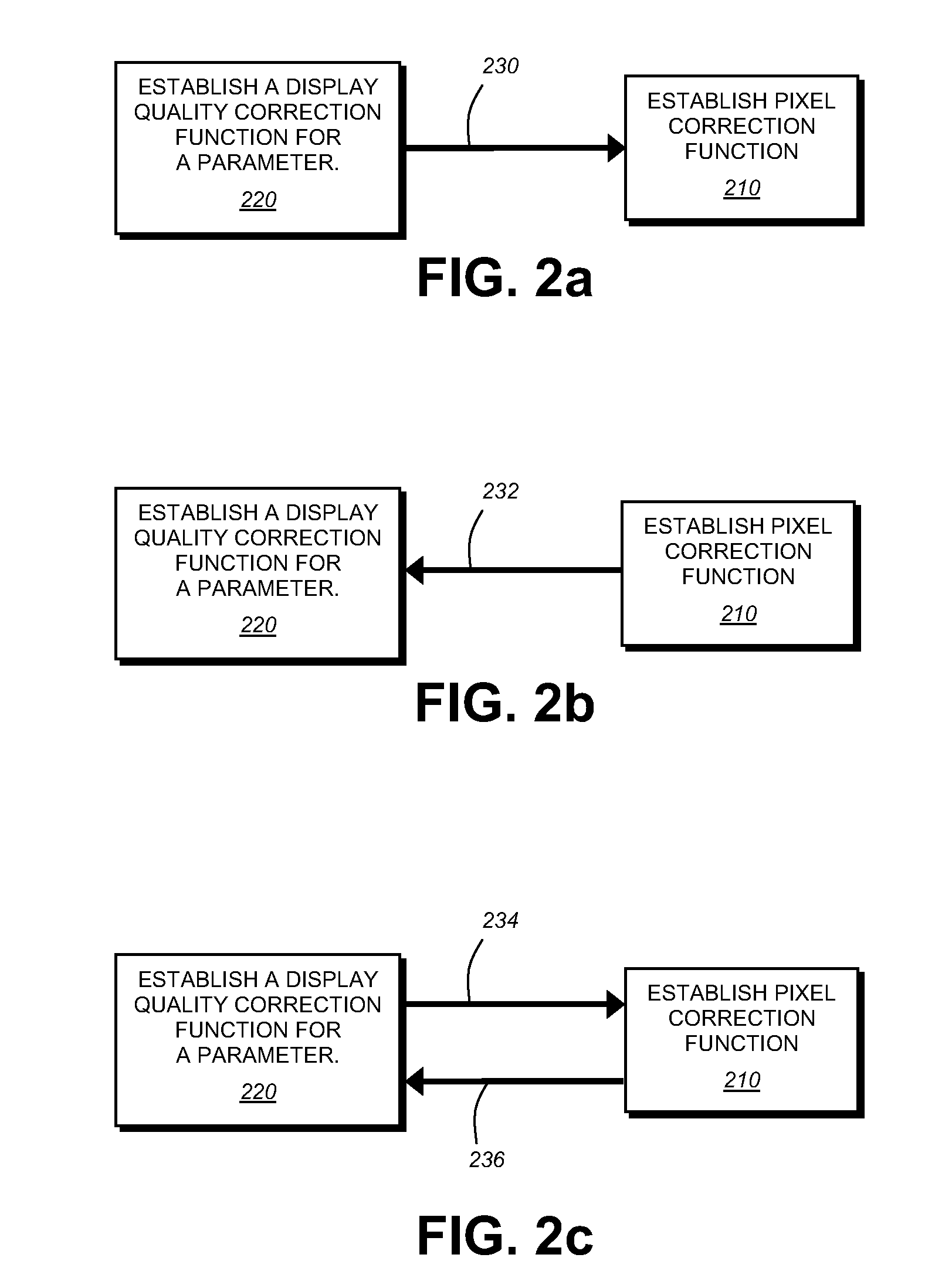System and method for providing improved display quality by display adjustment and image processing using optical feedback
a technology of optical feedback and display adjustment, applied in the field of graphical displays, can solve the problems of not having to have very high-quality displays, the eye does not realize the beam is being rasterized, and neither the many papers they refer to actually contemplate changing the coarse parameters, so as to achieve coarse control of display behavior and display further improve
- Summary
- Abstract
- Description
- Claims
- Application Information
AI Technical Summary
Benefits of technology
Problems solved by technology
Method used
Image
Examples
Embodiment Construction
[0032]A. Sensors
[0033]By way of further background, to capture information as to the quality of the image, the system of this invention utilizes one or more light sensors. A sensor can be defined in a variety of ways and can be one of many different types, including cameras, linear arrays of light sensors, and light sensors with no inherent spatial information, such as a photo-diode. Sometimes the system requires many sensors, and sometimes it requires only one. The sensor(s) may detect infrared, ultraviolet, or visible light in either narrow or broad-wavelength bands. It / they may be sensitive to position, as an imaging camera, or insensitive to position, as a single light level sensing photodiode. Some sensors, like camera(s), may provide a sense of the three-dimensional geometry of the system.
[0034]Note that even very simple light sensors provide significant amounts of information when used in conjunction with displays / projectors, including color, intensity and spatial information...
PUM
 Login to View More
Login to View More Abstract
Description
Claims
Application Information
 Login to View More
Login to View More - R&D
- Intellectual Property
- Life Sciences
- Materials
- Tech Scout
- Unparalleled Data Quality
- Higher Quality Content
- 60% Fewer Hallucinations
Browse by: Latest US Patents, China's latest patents, Technical Efficacy Thesaurus, Application Domain, Technology Topic, Popular Technical Reports.
© 2025 PatSnap. All rights reserved.Legal|Privacy policy|Modern Slavery Act Transparency Statement|Sitemap|About US| Contact US: help@patsnap.com



